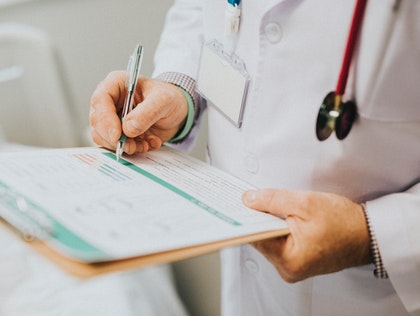Foodborne infections can be prevented by avoiding certain foods and maintaining healthy hand and food hygiene. In this article, we briefly discuss two food-borne infections: salmonella and toxoplasma. We also outline basic prevention strategies to prevent them.
SALMONELLA
Salmonella (non-typhoid variety such as Salmonella enterica) is a type of bacteria which causes food poisoning (gastroenteritis) known as salmonellosis.
Pregnant women are not particularly at high risk like listeria. Also, fetal infection is rare. But as the immune system (‘cell-mediated immunity’) is lowered during pregnancy (due to the effect of progesterone), severe salmonellosis can happen.
Salmonella infection can take place due to the following:
1. Consuming contaminated food:
a) Raw/ undercooked eggs (and food made from them).
b) Unpasteurised milk (and food products made from unpasteurised milk).
c) Raw/ undercooked meat and seafood.
d) unwashed fruits and vegetables.
e) contaminated drinking water.
Poor food handling (especially in restaurants and community meals) can lead to outbreaks of salmonellosis.
It is important to remember that some homemade foods are made from raw eggs. Examples include salad dressings, mayonnaise, ice creams, custards, raw cookie dough and cake batter. Therefore, they can be contaminated with salmonella.
2. From the infected animals:
Some pet birds, pet reptiles (such as snakes, turtles and lizard) and farm animals (such as chickens, ducks and geese) can carry salmonella and infection can spread if proper hand hygiene is not followed after handling them.
What are the symptoms?
Usually, the symptoms start within 12 -72 hours after consuming the infected food or drink. In most cases, symptoms settle without treatment in 4-7 days.
The symptoms of salmonellosis are:
1. Gastroenteritis: abdominal pain, diarrhoea, vomiting
2. Fever, headache, body ache
3. In severe cases: rash, blood in the stool or urine)
What complications can happen in severe cases?
In severe cases salmonellosis can cause the following:
1. Severe dehydration (leading to electrolyte imbalance and kidney failure)
2. Septicaemia: the infection can spread through the blood circulation and infect different body organs affecting the brain (meningitis), heart (endocarditis), joints (reactive arthritis) and bones (osteomyelitis).
3. Rarely it can lead to death due to severe infection and multiple organ failure.
Can salmonellosis affect the fetus?
Salmonella rarely affects the fetus, unlike listeria.
It can enter the bloodstream (‘Salmonella bacteraemia’) of the pregnant women in about 4% cases.
Then salmonella can cross the placenta and infect the baby. In rare cases, this can result in miscarriage and preterm labour.
How to prevent salmonellosis?
1. Avoid eating food likely to be contaminated with salmonella.
2. Maintain good hand and food hygiene:
Wash hands thoroughly and dry after handling raw food (eggs, meat, fish) and vegetables, changing nappies, cleaning pet faeces or handing pet birds and reptiles.
Wash kitchen surfaces, cooking utensils, chopping boards/ knives after handling raw food and vegetables.
TOXOPLASMA
Toxoplasma is a parasite (Toxoplasma gondii) which can cause food-borne infection and can affect the fetus.
How can the pregnant woman get a toxoplasma infection?
1. Contaminated food:
This includes raw/ undercooked meat, contaminated water and unwashed fruits and vegetables.
2. Infected animals:
An important source of toxoplasma infection is contact with contaminated cat faeces.
In all practical purposes, an outdoor cat is infected with toxoplasma by eating mice and other small animals or raw meat.
It is important to remember that a pregnant woman cannot get the toxoplasma infection simply by stroking the cat or keeping the cat at home. Infection can only happen if one comes in contact with infected cat faeces during pregnancy.
The infected cats do not show any symptoms. Therefore, there is no way to know that the cat is carrying the parasite.
The infected cat then sheds toxoplasma in the faeces. This, in turn, contaminates the surrounding areas where the infected cat defecates, such as the soil in the garden and a litter box. Toxoplasma can survive in the cat faeces for approximately 2 weeks.
What are the symptoms of toxoplasma?
In most of the healthy pregnant women, toxoplasma infection does not cause any symptom. Therefore, it may not be even possible to know or suspect the presence of active Toxoplasma infection in the body.
About 10% of pregnant women may have influenza-like symptoms, such as sore throat, swollen glands, headache, body and muscle pain.
Can toxoplasma infection affect the fetus?
The incidence of toxoplasma varies between countries. For example, it is estimated that about 85% of women are at risk of toxoplasma infection during pregnancy in the US.
Approximately, 4 out of 10 toxoplasma infections cross the placenta and affect the baby.
This can lead to:
1. Miscarriage and stillbirth
2. Congenital toxoplasmosis:
babies can be born with blindness, deafness and impaired brain function and intellectual abilities.
Some children develop these problems many years after their birth. They may need social and medical care and support for many years to come.
How to prevent infection from contaminated cat faeces?
1. To wear protective gloves during gardening. Wash your hands and gloves thoroughly afterwards.
2. If possible, ask someone else to remove faeces from the cat litter trays or wear disposable protective gloves during that. Thereafter wash your hands thoroughly.
3. Infected cat faeces do not become infectious until 1-5 days after it is shed. Therefore, it is advisable to change the cat litter box daily.
4. Cover the outdoor sandpits. This will prevent cats to use them as litter boxes.
5. Avoid feeding the cat with raw meat. Instead, feed them with commercial cat food.
6. It is advisable not to have a new cat during pregnancy.
If the pet cat goes outdoors, then the pregnant woman should have a blood test for toxoplasmosis.

